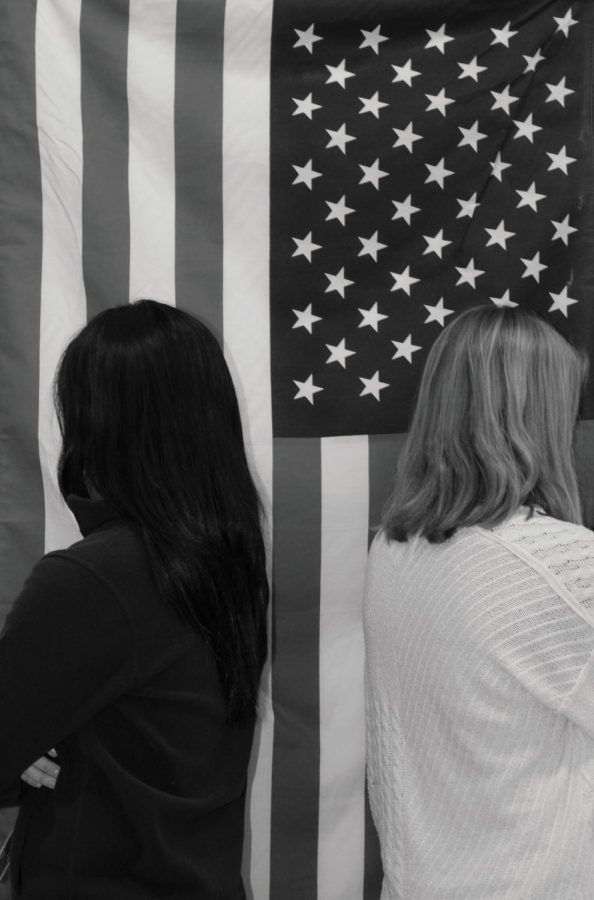In a severed state
Bridging political gaps in a polarized society
Photo by Gurneer Sidhu
In this issue, Spotlight explores how politics and media fracture a nation into extremes that continue to drift further apart.
POLITICAL DIVIDE: AN INTRODUCTION
Whether through debating at the dinner table or playing devil’s advocate in a class discussion, political disagreements have become a pillar of daily social interactions. Although it is likely for varying opinions to clash, when little cracks spread into clefts, such as violence and animosity, there is cause for concern.
In recent years, the political attitudes of American citizens have diverged further and further apart. At an unprecedented level, political polarization is pushing Americans across the country to divide themselves into mutually exclusive political camps on opposite ends of the political spectrum.
This recent phenomenon can be explained for a variety of reasons. New technology has fostered the globalization of information, which has, in turn, pushed these trains of thought to further extremes. With the rise of social media, virtual debates offer people on both sides of the issues anonymity and a feigned sense of boldness that allow people to push their own political ideas more aggressively than they normally would. Furthermore, news media outlets, on all parts of the political spectrum, often cater to the masses and play into a desire for confirmation bias by presenting angles and stories that will keep their ratings high.
For this issue, the Spotlight staff has decided to focus on the fissure that political polarization is creating in American society by determining the width of the gap, exploring the role that American media plays in it, and searching for successful ways to reach past this ever-increasing divide.
POLITICAL POLARIZATION
Conservative or liberal, leftist or right-wing, in modern-day these labels have grown into signifiers of a person’s values and merit. As people’s political opinions entangle with their identities, separating disagreement from personal affront becomes a thorny task: an endeavor that has developed into an evermore difficult affair as time has progressed.
“I have seen in the last 30 years, more division. When I was growing up, in my 20s and 30s, you would have Democrats here. Republicans here. They would be kind of moderate. But in the 90s and since, we have extremes on both sides. Rarely do we have people in the center willing to compromise,” Terry Geoghegan, government and politics teacher, said. “It’s all or nothing, you know?”
This divide does not just exist within Geoghegan’s personal observations. A 2014 Pew Research Center (PCR) analysis found that Democrats and Republicans are farther apart ideologically today than at any time in the past 50 years.

Shane Wysocki, political science club leader, notices similar trends himself. He attributes this shift to the news media outlets that pander to the audiences that they know they’re going to attract.
When it comes to getting news about politics and government, liberals and conservatives inhabit different worlds. There is little overlap in the news sources they turn to, making ideological differences especially stark, according to a year-long effort by the PCR to understand political polarity and how Americans consume political information via news media, social media, and friends.
“Obviously if you’re a Democrat, you’re probably not gonna watch Fox News. You’re going to move towards MSNBC. If you’re a Republican, you’re probably not going to watch CNN or MSNBC. It’s just people [wanting] to hear what they want. They want to stay away from the actual conversation with the other side,” Wysocki said.
With these “echo chambers,” Wysocki believes a “huge divisive split,” in which individuals fail to self-reflect on their own beliefs, starts to form itself, ultimately prohibiting growth. However, Wysocki does not credit this divide solely to news outlets, he thinks it is also an innate difference of values that two prominent political parties have.
“The bases of the two parties and their core values are very different. I think the Democratic Party is very rooted in liberty and personal rights. The Republican Party, I think, is very much focused on family and traditional values.”
It is this contrast in “American values” that before the 2020 presidential election, rather than politics and policies, eight-in-ten of Democrats and Republicans credited their differences to the other side, according to PCR. Nine-in-ten in both camps worried that a victory by the other would lead to “lasting harm.” It is these beliefs that some students, like Wysocki, believe lead to hostility.
“If you look at the biggest example, Congress, there’s a lot of immaturity and childishness when you look at the way they react to different situations. Some people won’t even be friends with someone of the other political party. That’s really prevalent now, whereas ten years ago maybe that wouldn’t be the case,” Wysocki said.
Repercussions of “debat[ing] rather than convers[ing],” brings concern to teachers like Kim Ferraro, political science club sponsor.
“I have family friends that have similar political spectrums [but also] different political ideologies. Sometimes when people are not able to converse because they are in that echo chamber […] it’s almost like automatically in attack mode, where it’s like, ‘I just want to disprove you, I want to prove you wrong,’” Ferraro said. “When you’re trying to have an actual conversation with someone you’re not trying to just disprove [them], you’re trying to listen; you’re trying to hear; you’re trying to understand. I think a lot of times people forget that.”
POLARIZATION IN MEDIA
Looking out across the populous halls of a high school, it’s almost assured that one will be met by the tops of heads– armed by earbuds and with faces lit by the luminescent glow of a hand-held device. Through this glimpse into the routine of modern-day adolescents, we bear witness to the stream of constant consumption enabled by increased technological accessibility.
Alongside the expanded reach of information across internet networks, the breadth of polarized opinions that are presented to the general public has also broadened. With this increase in exposure to contrasting sources, how they are consumed and processed becomes evermore important.
“Some of the programs that people look at for news, I would not consider news programs. I would consider them entertainment programs or commentary programs, but for many Americans, they have lumped these two things together,” Carolyn Wagner, English teacher, said. “In my study of journalism, news should be objective and should be able to show all sides in relevant ratios.”
Wagner, former Bear Facts journalism advisor of 22 years, elaborated to say that this entails news reporting information that is accurate to its sources and proportional to the opinions held by professionals within those fields. Though she partially attributes news outlets feeding into polarization, Wagner also holds that it falls to consumers to monitor what they take in.
“It’s this crossover between news and entertainment, and it’s hard to really define where is the breaking point,” Wagner said. “But we have to keep in mind too, if we don’t make that news palatable, then who’s going to be consuming it? They’re not going to listen to the radio, they’re not going to watch the TV and they’re certainly not going to sit down and read a big long form of narrative that is of a topic that doesn’t interest them.”
The issue of accurate coverage stems from the media’s “need to humanize and contextualize everything they report in order to make readers care about a topic,” according to Wagner. In the spread of misinformation, it typically pertains to when outlets “go so far that they lose the evidence and reasoning, and pander to people’s emotions.”
Meanwhile the sheer abundance of content that has become available also plays a crucial role in the comprehension of journalistic media, according to Karen Marchand, Film and Media Analysis teacher, as issues arise when people are unable to discern the objectivity of what they consume as “what [people] get on the internet can be very extreme, most of it’s not, but some of it is and [people] are vulnerable to that.”
Since news has moved from paper to online, Marchand expounds that there are “many outlets that don’t necessarily follow the same journalistic standards or ethics old print newspapers used to.”As such, she feels there is a higher opportunity for polarizing information to be marketed as news. Wagner similarly remarks on the changes she’s observed between past generations to newer ones.
“When my parents were growing up, there were probably three to four channels on TV, and everyone watched the same news every evening,” Wagner said. “Nowadays, just even by how we access news it is hard for any of us to all have the same view of what’s taking place. [People] have access to hundreds of stations, plus you have all the add-on apps you can go to for other news outlets and I don’t mean that just for young people, that’s for all modern day news consumers.”
Though Marchand sees that divisive mentalities are stimulated by online platforms, she also sees advantages in how they “give the everyday person a voice, and allow people to rally and come up with ideas to make positive change.” With these benefits, she acknowledges that the matter of increased polarization is a double-edged sword.
Negative parallels Marchand observes are found when people may fall into “isolated bubbles of thought.” When factors such as social media algorithms and confirmation bias come into play, Marchand says if people “don’t actively look for other perspectives, they can get tunnel vision that keeps them from being open minded.
Cristina Mac Cormac, senior, also refers to the “bubble” that people may fall into when they are uninformed of various perspectives. She feels this may hinder progressive thought when people become antagonistic promoting their beliefs.
“It’s easy to get caught up in that mindset of ‘this is the only way to think about a topic,’” Mac Cormac said. “It’s really important for progress or for our future going forward for people to be able to look beyond their own perspective. That’s how you make progress.”
Wagner finds that a hindrance to this progress is the existence of “echo chambers,” as well as the presence of public figures online who “have the opportunity to greatly influence regular people,” even when their opinions may be uninformed.
“Just because someone has name recognition [doesn’t] mean they should be able to sway the public with their opinion. That comes back to us as news consumers, knowing who we get advice from and caring whether those are appropriate people to be getting advice from,” Wagner said. “Don’t just trust the one single show you are devoted to and watch religiously, because anytime you have a single attack on an issue, […] you’re not going to be able to overcome it.”
Ensuring that people do not fall prey to the influence of idolatry or echo chambers comes down to news literacy, a skill that Wagner finds essential to master in order to see less division and more unity overall. Taking the time to verify, fact check, or cross reference from an array of different sites is an action which both Wagner and Marchand feel is necessary to take.
“I’m sure I have been swayed [by the media],” Marchand said. “I’ve read an article or watched a show and been like, ‘wow, I never knew this. This is so interesting.’ But I try to be careful that once that idea is in my head, to say, ‘maybe I should read another article [for] a different perspective.”
To Marchand, looking from different angles is an integral part to developing her own opinions and having a full sense of different issues; although there are times where she is “sure [she hasn’t].” During the process of learning to look past one perspective, Marchand says it is still human to make mistakes or give way to confirmation bias.
“It’s important for individuals to learn to detect bias, whether it’s in their news or in their television shows, to understand when people are expressing opinions or when a fictional show may be slanting or a perspective in a certain extreme direction,” Marchand said. “Especially for people who aren’t aware of it, it’s important to understand that [bias] is there so it’s not just leading them without thought into a certain direction.”
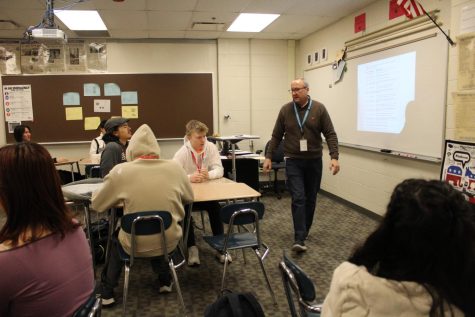
OVERCOMING POLARIZATION
While it’s apparent that polarization will continue to pervade society, in an era where jeering obscenities launched online seem to escalate to acts of domestic terrorism with ease; it may be time to take a step back and away. When news is indecipherable from propaganda and mass shootings become ubiquitous, the question arises: when is the chasm too wide? In a political landscape painted red, the consequences of polarization provide incentive to overcome the gap.
As news pandering remains relevant and information that may be false or polarized spreads, Geoghegan says his “advice would be to question” where people are getting their facts.
“In Honors U.S. History, we teach people to make a claim and cite evidence given ten documents,” Geoghegan said. “Just because you claim that [your] evidence [is] supporting your idea, [that] doesn’t mean it does. Keep an open mind and just crush it politely.”
When evidence lacks reliability, and prohibits people from seeing the “full picture” of events, Marchand cautions people to broaden the scope of their information sources.
“I would just tell people to go outside of what is showing up on your news feeds. The stories that pop up first are going to be the ones that align more to your viewpoint. If you tend to read Fox News, look at CNN, if you tend to read something that’s really far liberal or far right, try to look at the other side. You can see a view that’s written that has a left bias that has a right bias or that’s in the center and look at those multiple stories,” Marchand said.
However, the accuracy of information should not only be considered from news sites, but also from general comments online because “when [people are] behind a screen, [they] can say whatever [they] want.” Wysocki says while they do discuss “very polarizing topics” in the political science club, the environment lends itself to helping students understand each other’s perspectives through face to face conversations at meetings.
“In the political science club, when we talk about polarizing issues, [students] have to face it in a more civil manner, even if they disagree with what another person says. When they actually have to sit down and talk about it, [people can] argue in a safe forum where you’re not going to get harassed for what you believe,” Wysocki said.
Ferraro says that oftentimes, people become judgmental over other’s beliefs, and like Wysocki, she shares a similar view on the importance in having civil conversations. For her, it is necessary to take the fact that “each person is coming at something from a different angle” into consideration.
“Unless you know each person’s life story, you don’t know totally why they come to that perspective,” Ferraro said. “I think just realizing that we each have our own [opinions], we each are human beings, and we’re all striving to be better, makes it better and easier for us to kind of [shine] light [on] and talk with one another.”
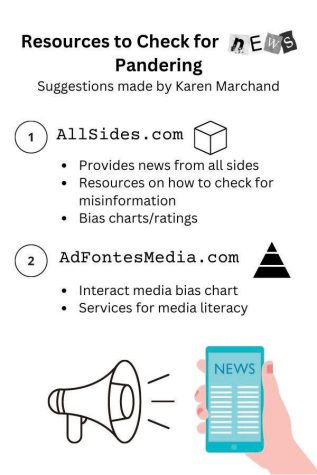
These conversations all contribute to what Wysocki and Geoghegan both agree is necessary to overcome polarization: compromise. Geoghegan says this theory is lacking as he rarely sees people “that are willing to compromise” in society.
“We might not get movements that benefit anybody. That’s why I’m a fan of compromise. I don’t get everything but I get some stuff,” Geoghegan said. “You’re moving in the direction you want.”
Ultimately, while Ferraro says the potential ramifications of polarity “scares [her] to a degree,” she has faith that the coming generations can quell the polarization affecting the political landscape.
“[Me and] the teachers around me, we all are trying to help our students understand how to read critically, think critically, and listen to one another. We have methods that will help [students] decrease the political divide,” Ferraro said. “I’ve even read [in] Pew Research that students are way better at deciphering misinformation than older generations. Data like that [makes] me feel better, like even though there is [a] divide, I think people don’t want that divide and that’s going to be some of the saving grace.”
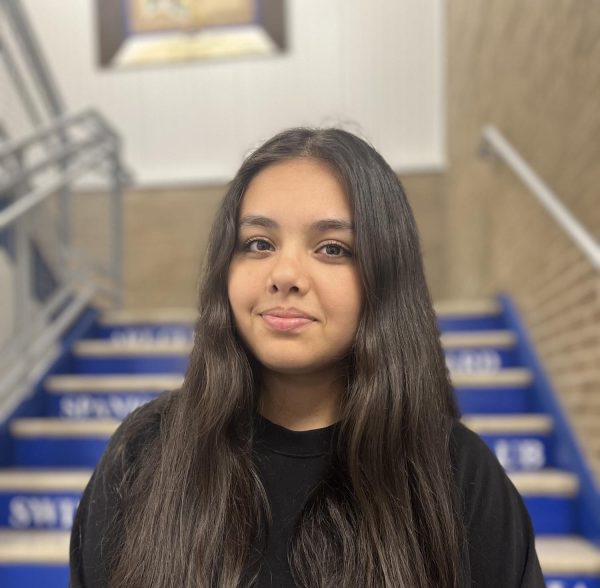
Coming back for her last year on Bear Facts, Gurneer will be Spotlight Editor for the second year in a row. Outside of Bear Facts, she participates in...
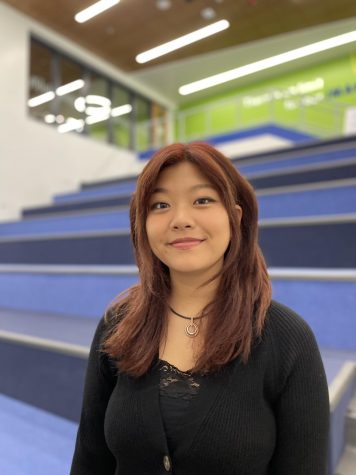
Going into their third year of being on the Bear Facts Staff, Kara hopes to take on Lois Lane-type capers as a senior. If you were to spot them outside...
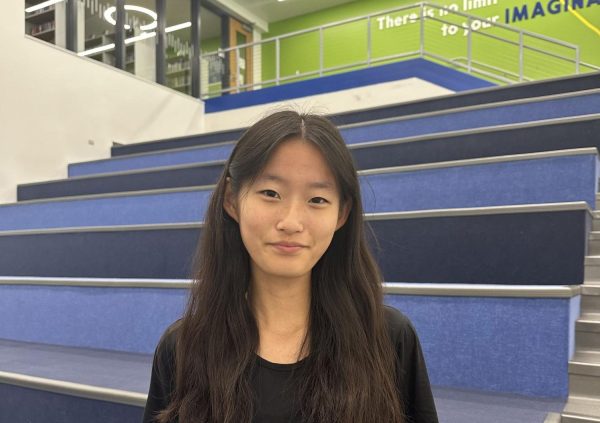
As a senior, this is Grace’s third year on the Bear Facts staff, acting as Spotlight Editor and secretary. In her free time, she enjoys running (sometimes),...
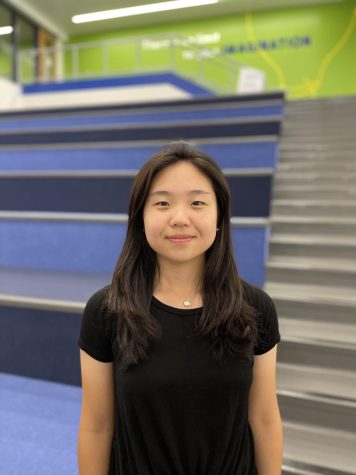
This is Jane’s third year on staff and second year as Digital Editor-in-Chief of Bear Facts. Jane is involved in orchestra, Tri-M, NHS, Sinfonietta,...

